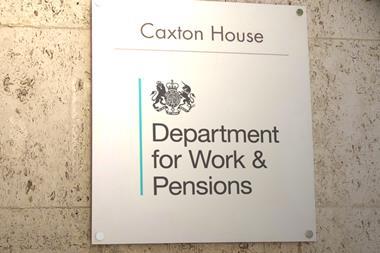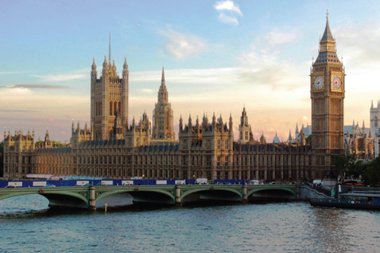A new consultation on measures to boost protections for members of UK defined benefit (DB) pension schemes has been launched by the Department for Work and Pensions (DWP) today. However, little detail on specifics is disclosed.
The consultation – which follows the passage of last year’s Pension Schemes Act setting out the framework for the new regulations, as well as an engagement programme with stakeholders connected with a range of schemes – starts to flesh out more on the new rules and establishes where The Pensions Regulator (TPR) will be able to step in if a scheme is falling short of the legal requirements.
However, there isn’t anything in the draft legislation about Fast Track and Bespoke arrangements, and nothing confirming the specific Fast Track parameters. All of that is left for the Code of Practice.
The proposed measures (see box) will contribute towards clearer funding standards and support trustees and employers to plan their scheme funding over the longer term, embedding good practice already seen in the market, as well as requiring trustees to report progress against scheme targets, the DWP said.
However, Laura McLaren, partner at Hymans Robertson, said: “The draft regulations don’t offer a great deal more in terms of specifics than had previously been signposted in consultation to date.”
She added: “There is some welcome reassurance that concerns raised by respondents are being addressed. In developing the draft regulations, DWP note they have aimed to ensure they will not unduly constrain open schemes. The regulator has also been keen to address widespread concerns around scheme specific flexibility in the Bespoke route.”
She noted that while DWP and TPR take time to “get the changes right”, trustees and plan sponsors will continue to need to prepare funding valuations knowing that new rules are coming down the line.
According to DWP, almost 10 million people across the UK remain in DB schemes, with around one million of those still actively paying into one. Collectively, DB schemes manage a total of approximately £1.7trn (€2trn) worth of assets.
Minister for Pensions Guy Opperman said: “Most DB schemes are well managed. However, despite the safeguards in place, best practice is not universal.
“Our intention is to have better – and clearer – funding standards, whilst retaining the strengths of a flexible, scheme-specific approach. It is nether ‘one size fits all’, nor about micro-managing schemes. Every scheme will be treated on its merits.”
The plans will also enable TPR to intervene more efficiently to protect members when needed – schemes will submit a statement of strategy alongside a scheme valuation, DWP stated.
Where a scheme appears to be falling short of its legal requirements, the regulator will be able to step in and engage with the scheme to ensure compliance and boost member security.
The DWP consultation also seeks input on additional proposals which would require DB schemes to appoint a chair if they do not already have one.
The consultation will run for 12 weeks from 26 July 2022, with DWP particularly seeking feedback from trustees and managers of DB schemes, sponsoring employers, industry professionals, scheme members, and other stakeholders.
No room for flexibility
According to Mike Smedley, partner at Isio, the draft regulations are “surprisingly prescriptive and could be a bit of a straightjacket for trustees”.
“Schemes are expected to follow a gradual de-risking approach towards a low risk ‘highly resilient’ and ‘broadly cashflow matched’ investment strategy, with deadlines determined by The Pensions Regulator. Whilst this might be right for many schemes, it doesn’t allow for much flexibility and it’s not clear what happens in a world where things don’t always go to plan. It’s also the furthest that government has ever gone in dictating to pension trustees how their assets should be invested,” he explained.
“There will be lots of work for trustees and their advisers to map out their future strategy in the detail required. But the biggest shock is reserved for companies with the proposal to hard-code in legislation that deficits ‘must be recovered as soon as the employer can reasonably afford’,” he continued, adding that this doesn’t offer much scope for compromise and may drive a wedge between trustees and sponsors at a time when they are increasingly working closely together.
David Brooks, technical director at pensions consultancy Broadstone, said: “Schemes will need to set a date from which the risk to members’ benefits is at a minimum. In general, investment risk is curtailed and it is re-emphasised that sponsor covenant must be monitored and understood.
“The question remaining for trustees and sponsors is whether this funnels schemes too fast and too hard by removing the upside opportunities of holding growth assets for longer. The Pensions Minister is at pains to point out that this isn’t a one size fits all approach. However, the DWP will be leaving a good proportion of the detail to The Pensions Regulator who have promised to consult on their code in the Autumn. It is here that the devilish detail may yet emerge.”
Rules and regulations
The publication today of proposed new regulations on the funding of DB pension schemes marks a major milestone on the journey to a new regime, first flagged in the 2017 Conservative Manifesto and a 2018 White Paper “Protecting Defined Benefit pension schemes”, according to LCP.
These plans were in large part in response to widespread public concern arising from shortfalls in household name pension schemes such as BHS and Carillion, the latter ending up in the Pension Protection Fund (PPF).
Today’s regulations arise from the Pension Schemes Act 2021 and provide the legal backing for a proposed new framework for regulating DB pensions. They pave the way for the publication of a separate consultation by TPR on the proposed DB funding code, likely to come into force in late 2023 or early 2024.
Under the new regime:
- All schemes will need to set out their ‘long-term objective’ – for example, to buy out their liabilities with an insurer, to run on with ‘low dependency’ on sponsor support, or to transfer assets to a pension superfund;
- All schemes will need a ‘journey plan’ to get to their long-term objective, based on a realistic assessment of the ‘covenant’ (financial support) provided by the sponsoring employer in backing the scheme.
What has been published today marks a considerable evolution from original ideas floated by DWP and TPR, which could have landed employers with multi-billion-pound bills in additional contributions arising from more aggressive schedules to deal with historic deficits.
“In particular, DWP is clear that it wishes to retain a scheme specific funding regime with flexibility where appropriate – though we must wait for TPR’s code itself before we see just how much flexibility there will be,” said Jonathan Camfield, partner at LCP.
Today’s regulations include:
- New rules on the funding and investment strategies which schemes must adopt, requiring much greater transparency, monitoring and review;
- A requirement that schemes must achieve a state of “low dependency” on the employer in terms of both investment and funding strategy by the time “significant maturity” is reached – and new rules on setting such strategy and on monitoring progress towards it;
- A requirement that the ‘recovery plan’ for schemes which are underfunded must be set such that a deficit is removed as soon as an employer can reasonably afford – this is tougher than under the existing regime, and may have significant consequences for employers. However, there is little detail on what this means in practice, with this presumably to come in the code itself.
The regulations are silent on the expected “fast-track” and “bespoke” routes which are expected to form the basis by which schemes can demonstrate compliance with TPR’s new funding code.
“The world has changed a great deal since these ideas were first proposed and we welcome the fact that consideration has clearly been given to this, as well as concerns raised by the industry. But we are still some way from a finished product,” said Camfield.
“Once these regulations have been finalised, the way will then be clear for TPR to publish its second Funding Code consultation which will show in detail the extent to which government and regulators have listened to industry concerns about the potential rigidity of what was proposed.”
Read more
Read the digital edition of IPE’s latest magazine



















No comments yet